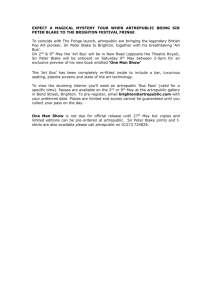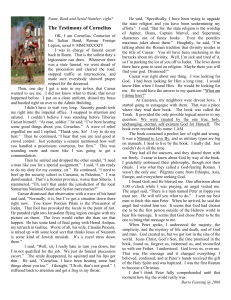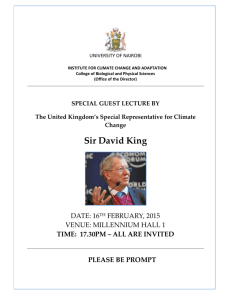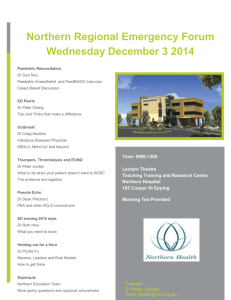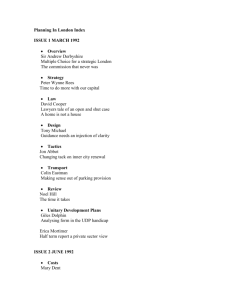MANSFIELD, Sir Peter (9 Oct
advertisement
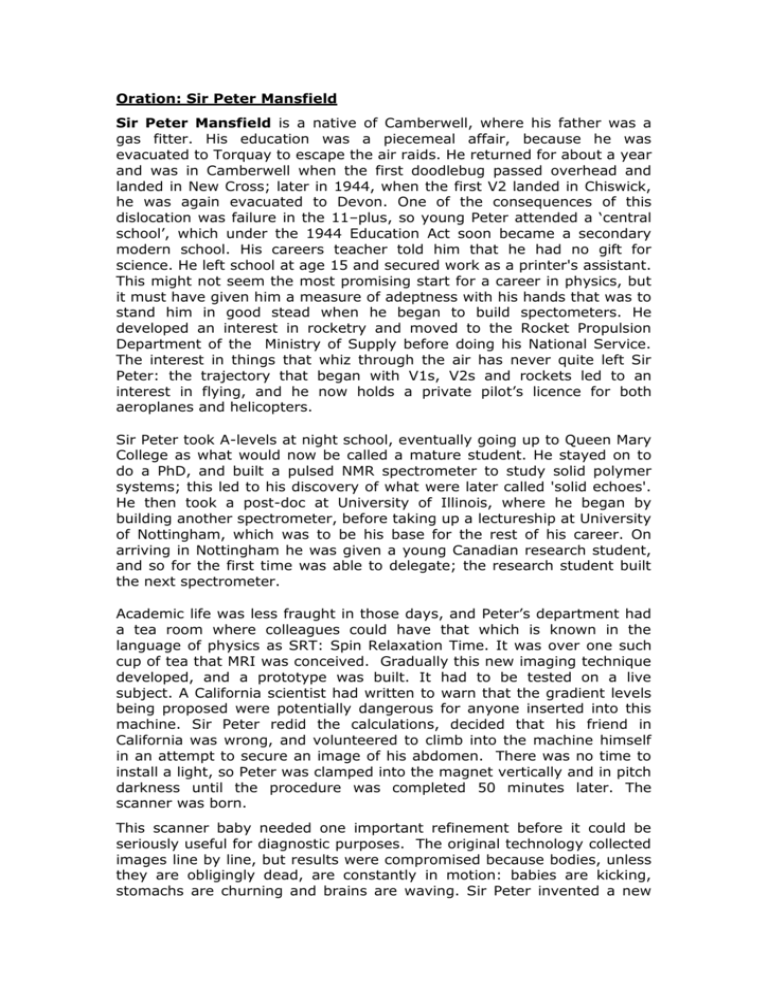
Oration: Sir Peter Mansfield Sir Peter Mansfield is a native of Camberwell, where his father was a gas fitter. His education was a piecemeal affair, because he was evacuated to Torquay to escape the air raids. He returned for about a year and was in Camberwell when the first doodlebug passed overhead and landed in New Cross; later in 1944, when the first V2 landed in Chiswick, he was again evacuated to Devon. One of the consequences of this dislocation was failure in the 11–plus, so young Peter attended a ‘central school’, which under the 1944 Education Act soon became a secondary modern school. His careers teacher told him that he had no gift for science. He left school at age 15 and secured work as a printer's assistant. This might not seem the most promising start for a career in physics, but it must have given him a measure of adeptness with his hands that was to stand him in good stead when he began to build spectometers. He developed an interest in rocketry and moved to the Rocket Propulsion Department of the Ministry of Supply before doing his National Service. The interest in things that whiz through the air has never quite left Sir Peter: the trajectory that began with V1s, V2s and rockets led to an interest in flying, and he now holds a private pilot’s licence for both aeroplanes and helicopters. Sir Peter took A-levels at night school, eventually going up to Queen Mary College as what would now be called a mature student. He stayed on to do a PhD, and built a pulsed NMR spectrometer to study solid polymer systems; this led to his discovery of what were later called 'solid echoes'. He then took a post-doc at University of Illinois, where he began by building another spectrometer, before taking up a lectureship at University of Nottingham, which was to be his base for the rest of his career. On arriving in Nottingham he was given a young Canadian research student, and so for the first time was able to delegate; the research student built the next spectrometer. Academic life was less fraught in those days, and Peter’s department had a tea room where colleagues could have that which is known in the language of physics as SRT: Spin Relaxation Time. It was over one such cup of tea that MRI was conceived. Gradually this new imaging technique developed, and a prototype was built. It had to be tested on a live subject. A California scientist had written to warn that the gradient levels being proposed were potentially dangerous for anyone inserted into this machine. Sir Peter redid the calculations, decided that his friend in California was wrong, and volunteered to climb into the machine himself in an attempt to secure an image of his abdomen. There was no time to install a light, so Peter was clamped into the magnet vertically and in pitch darkness until the procedure was completed 50 minutes later. The scanner was born. This scanner baby needed one important refinement before it could be seriously useful for diagnostic purposes. The original technology collected images line by line, but results were compromised because bodies, unless they are obligingly dead, are constantly in motion: babies are kicking, stomachs are churning and brains are waving. Sir Peter invented a new technology and a new acronym: EPI, which is echo planar imaging. EPI allowed him to use MRI for ‘dynamic imaging’, which meant that the technology could be used to study processes in the body. One element in this technology, was supplied by our Chancellor’s company. The honours that followed read like a list achieved by a university rather than an individual: gold medals from learned societies, the fellowship of the Royal Society, honorary doctorates from Kent, Strasbourg and Kraków and, in 2003, the Nobel Prize for Medicine and a knighthood. These honours, welcome as they are by the medical community, are not the deepest font of satisfaction for Sir Peter. The real prize is the knowledge that because his science has greatly enhanced the ability of doctors to diagnose accurately, the anguish suffered by patients with serious illnesses can in some measure be mitigated by the knowledge of exactly what is wrong, and problems can be addressed through drugs or surgery, so offering the hope of a living future beyond the illness. Mr Chancellor, on the recommendation of the Senate and the Council, I present to you Professor Sir Peter Mansfield, that you may confer upon him the honorary degree of Doctor of Science. G Campbell, Public Orator

